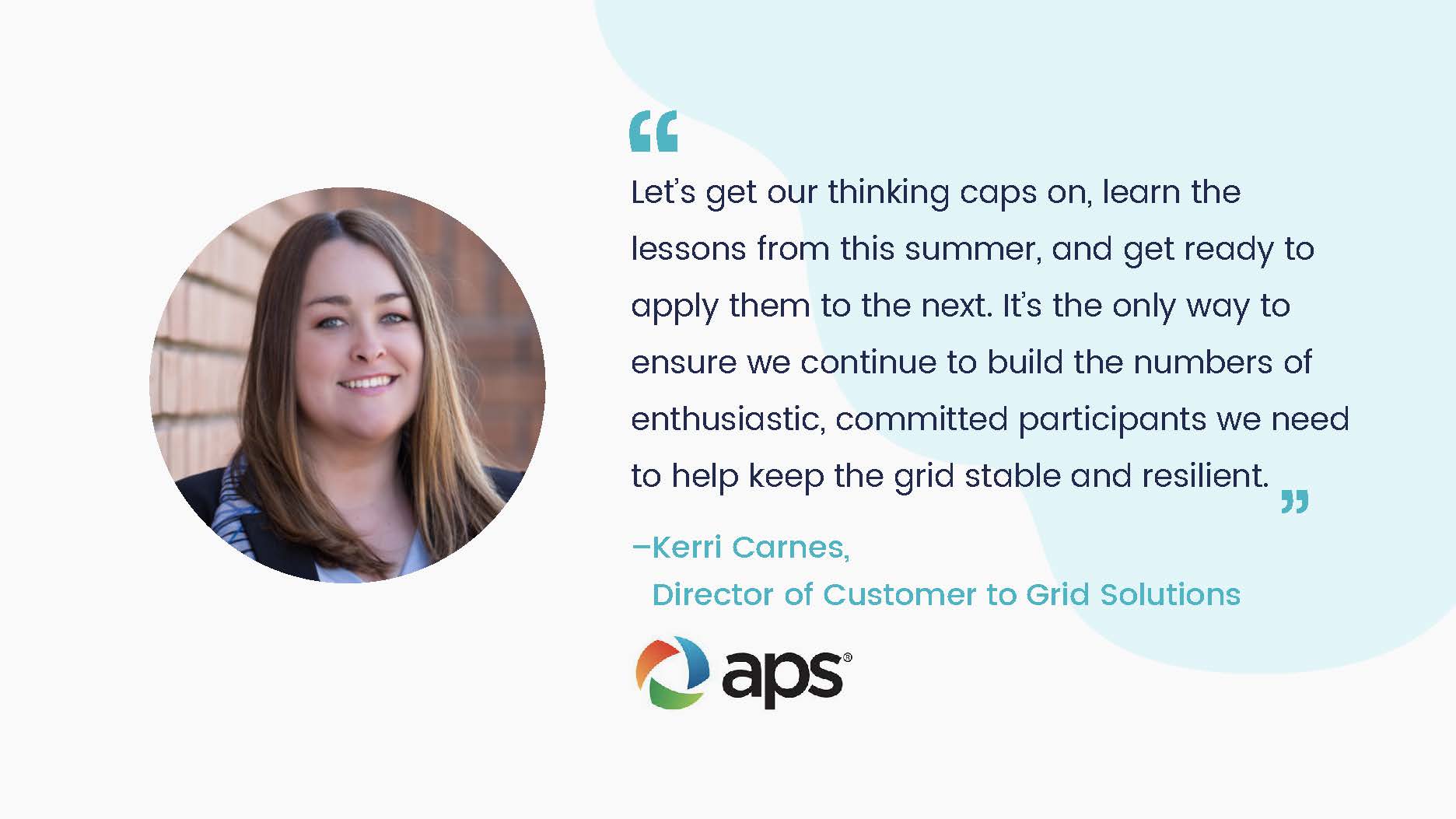
EnergyHub Team
November 29, 2022
A thought piece from Kerri Carnes, Director of Customer to Grid Solutions, Arizona Public Service
A few months ago, things here in Phoenix got hot. I mean really hot. We were in the middle of a summer heatwave, and as director of customer to grid solutions at Arizona Public Service (APS), it’s my team’s job to help ensure the grid stays resilient with assistance from our customers.

Cool Rewards is key to grid stability
One important tool is our Cool Rewards program. Set up with the help of EnergyHub, the initiative gives customers discounted rates on thermostats and annual incentive payments for participation in our demand response (DR) program. In return, their smart thermostats automatically precool their home before an anticipated period of exceptionally high energy use by customers, known as an “event.” During this time, customers help reduce energy demand during the event by participating in our program that adjusts the set point on their thermostats. Users can opt out at any time by adjusting their thermostat manually.
Right now, we have approximately 70,000 customers contributing nearly 110 MW of grid flexibility. But as you’ll see, there are sometimes roadblocks to ensuring those numbers continue to grow.
An unexpected media response
As the mercury soared this summer, my team frequently deployed our DR resource to help keep the lights on and the AC running. While a neighboring energy company was calling for voluntary conservation, the local media were calling us to find out about our approach.
So far, so good. We jumped at the opportunity to educate our customers about our program and extend its impact. But then came a slightly awkward conversation with an area journalist. When the expression demand response event was mentioned, the journalist reacted in a way I hadn’t expected. “That sounds a bit scary,” the reporter said.
That was an aha moment for me. Is the word event causing anxiety for potential Cool Rewards participants? Could it be that the specific terms we’re using are turning people off the idea of participating in DR programs?
The power of words
After that exchange, I spent a while pondering the issue. I’d worked long and hard with the customer-demand-side management team over the years to refine our messaging, so I understood the importance of getting our explanations right, down to the individual words we used with this complex topic.
But it appears those still need to evolve to continually improve customer engagement and satisfaction, and to ensure the continued growth of the program. As an example, the average customer does not understand what demand response is, in the context of the grid.
A better way to spread our message
But a more fundamental problem is highlighted by our surveys, which tell us customers feel they might not be getting the value back from what they are contributing. The conclusion I’ve drawn is that we need to keep working on both driving the customer value proposition and continuing to refine our messaging.
If we can get that right, we can encourage customers to provide grid flexibility without undermining their confidence in the ability of the utility to provide affordable and reliable service. It’s clear that customers want to feel that they’re contributing to the greater good when they enroll in demand response programs like ours.
An alternative to event?
So, we’re back to the word event. Can we use an expression that doesn’t cause customer anxiety? And if so, what would it be? I don’t have the answer, but I’m highlighting this particular expression to spotlight the need for deep thinking when it comes to customer engagement.
My takeaway? Let’s get our thinking caps on, learn the lessons from this summer, and get ready to apply them to the next. It’s the only way to ensure we continue to build the numbers of enthusiastic, committed participants to help keep the grid stable and resilient.
Interested in keeping up with the latest dispatch from the grid edge?
Get our next post in your inbox.

